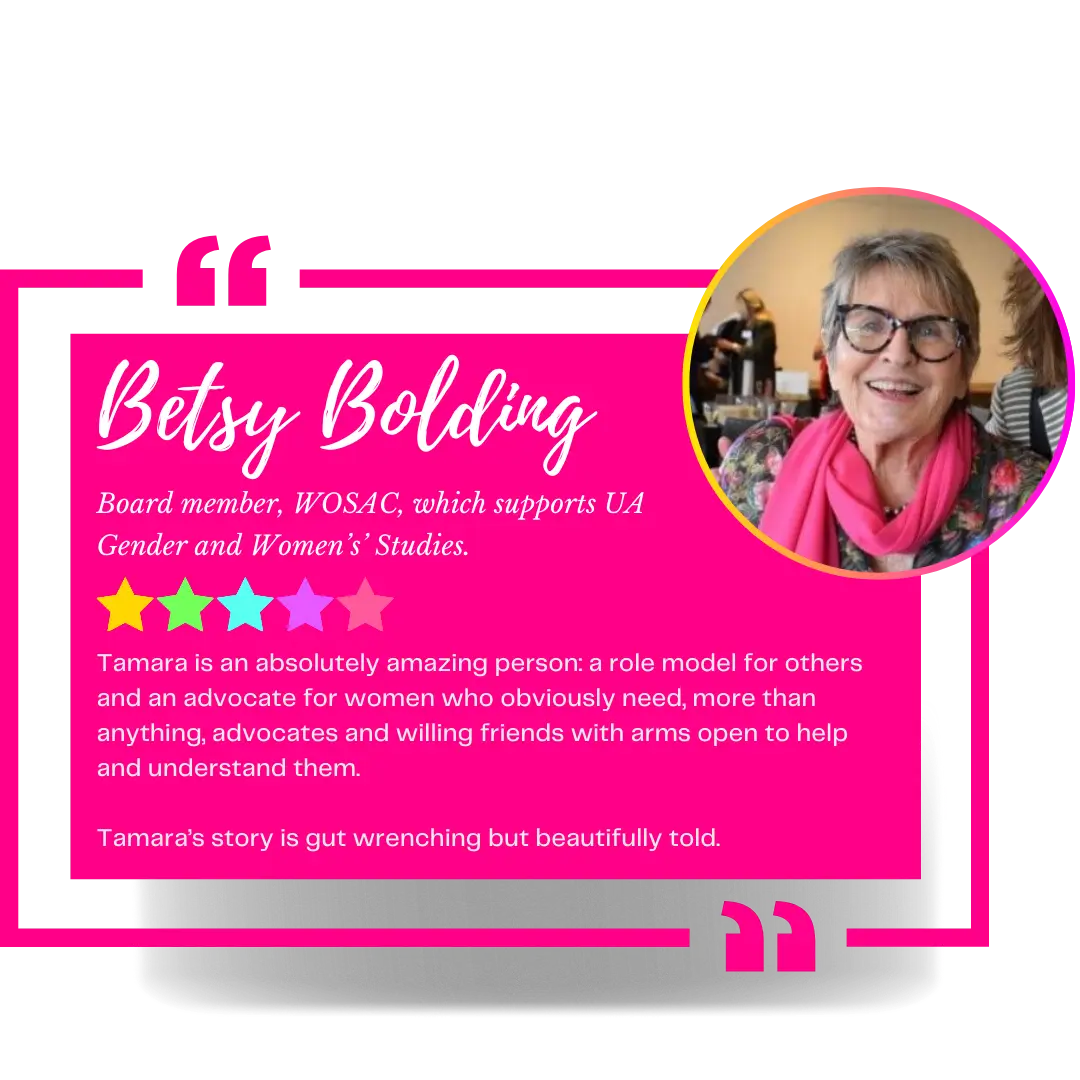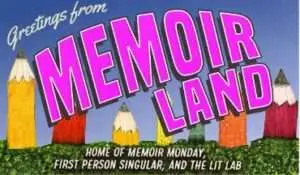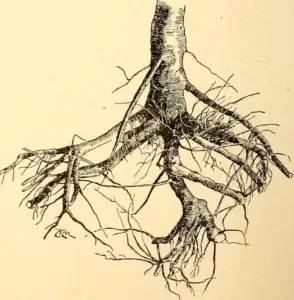SGA
1. Entry into the Group
Second Generation Adult
They are born into the group or brought in as children by their parents. They do not choose to join; rather, they are raised within the group’s beliefs and practices from an early age.
First Generation Members
These individuals join the group voluntarily, usually as adults. They are often drawn in by the group’s ideology, a sense of community, a search for meaning, or personal crises that make the group’s promises appealing.
2. Identity Formation
First Generation Members
Their identity is often closely intertwined with the group’s culture from birth. Separating their personal identity from the group’s identity can be challenging, as they may not have been exposed to alternative view points or lifestyles.
First Generation Members
They typically have formed an identity outside of the group before joining. This prior identity can sometimes help them maintain a certain degree of individuality within the group.
3. Socialization
Second Generation Adult
They are socialized within the confines of the group, which can isolate them from mainstream society and limit their exposure to different social norms and behaviors.
First Generation Members
They have usually experienced socialization in mainstream society before joining the group, giving them a broader understanding of social norms and behaviors outside the group.
4. Educational Background
Second Generation Adult
They are socialized within the confines of the group, which can isolate them from mainstream society and limit their exposure to different social norms and behaviors.
First Generation Members
They often have completed their education in mainstream settings before joining the group, providing them with a broader base of knowledge and sometimes critical thinking skills not influenced by the group.
5. Psychological Challenges
Second Generation Adult
They may face intense psychological challenges due to an upbringing in a high-control environment, including issues like dependency, lack of autonomy, and identity crises.
First Generation Members
While they can also suffer psychological effects from manipulation and control within the group, they often retain some psychological frame works from before their time in the group, which can aid in recovery.
6. Exiting the Group
Second Generation Adult
Leaving the group can be particularly traumatic, as they are not only leaving their religious or ideological beliefs but also their familial and social networks.
First Generation Members
While leaving the group can also be difficult for them, they may have some external social or family connections to return to, which can provide a support system.
7. Adaptation to Mainstream Society
Second Generation Adult
Adaptation can be more challenging due to their upbringing entirely within the cult environment. They might struggle more with cultural integration and independence.
First Generation Members
They often retain some skills and experiences from before joining the group, which can facilitate a smoother reintegration into mainstream society.
Understanding these differences is crucial for providing appropriate support and resources to individuals exiting cults, as their needs and experiences can vary significantly based on their generational status within the group.
Building on the differences between Second Generation Adults (SGAs) and first generation cult members, several other aspects highlight their varied experiences and the distinct challenges they face
8. Attachment to the Group's Leadership
Second Generation Adult
They may view the group’s leader or leaders almost as parental figures, especially if they were raised from birth within the group. This can create a deep-seated loyalty and emotional dependence that is difficult to break.
First Generation Members
While they can also develop strong attachments to the group’s leadership, their adult entry into the group means their attachment is generally less familial and more ideological or situational.
9. Legal and Financial Independence
Second Generation Adult
They often lack legal and financial independence because they grow up in a system that does not encourage autonomy. Upon leaving, they may struggle with basic life skills, such as managing finances, understanding their legal rights, or securing employment.
First Generation Members
Typically, they have some experience with independence before joining the group, which can aid them in managing their legal and financial affairs after leaving.
10. Sense of Belonging
Second Generation Adult
Their entire sense of community and belonging is often intrinsically linked to the group. Leaving the group means not just a shift in belief or lifestyle but a complete loss of their community and support network.
First Generation Members
First Generation Members: Although they too experience a loss of community upon leaving, they may have memories of and sometimes access to a support network outside the group that predates their involvement.
11. Coping Mechanisms
Second Generation Adult
Due to their upbringing, they may not have developed healthy coping mechanisms for stress and conflict outside of what was modeled within the group. This can lead to difficulties in handling common life stresses in adaptive ways.
First Generation Members
They often have a repertoire of coping mechanisms that they developed before joining the group, which might be reactivated upon leaving, aiding their adaptation process.
12. Perspective on Authority
Second Generation Adult
Growing up in a high-control group, SGAs often have a skewed perspective on authority, potentially viewing it either with undue reverence or deep-seated mistrust.
First Generation Members
Their attitudes toward authority are more likely to have been shaped by a variety of experiences, leading to a potentially more balanced view, although this can be significantly altered by their time in the group.
13. Recovery and Healing
Second Generation Adult
Their recovery process often requires extensive support to rebuild their identity, learn social norms, and gain the education or skills they missed. Therapy might focus extensively on issues like autonomy, self-worth, and redefining relationships.
First Generation Members
While they also benefit from support and therapy, their recovery might focus more on issues like reclaiming their pre-cult identity, dealing with betrayal, and unlearning the group’s indoctrination.
14. Exposure to External Information
Second Generation Adult
They typically have very limited exposure to external sources of information. Their worldview is heavily filtered through the doctrines and narratives endorsed by the group. This can leave them unprepared for the diversity of thoughts and practices in the outside world.
First Generation Members
These individuals usually have had access to a variety of information sources before joining the group. They may have consciously rejected these external views when joining but can potentially reconnect with these broader perspectives if they leave.
15. Cultural and Technological Adaptation
Second Generation Adult
Adapting to broader cultural norms and technology can be particularly challenging. They might not only lack familiarity with current cultural trends and technology but also with basic cultural references that shape social interactions outside the group.
First Generation Members
Although they may have experienced a period of isolation from mainstream culture while in the group, they generally have a foundational understanding of cultural and technological contexts from before their involvement.
16. Relationship with Family
Second Generation Adult
Family relationships are often complicated by the fact that their family members are also group members. Choosing to leave the group can mean severing ties with close family, which adds emotional complexity and potential isolation to their departure.
First Generation Members
Their decision to leave may strain relationships with family who are not part of the group, but they often have the possibility to reestablish these connections, offering a potential support network during their transition.
17. Handling of Dissent
Second Generation Adult
Dissent within the group may be something they’ve rarely seen openly expressed, and they might not know how to handle disagreement or conflict in a healthy way. Their training to conform without question can hinder their ability to engage in critical discussions.
First Generation Members
They might have experienced and even practiced dissent before joining the group and thus may have a more developed capacity to handle disagreements and advocate for themselves, even within the group.
18. Mental Health Support
Second Generation Adult
Mental health issues might be more complex and deeply rooted, often requiring specialized therapeutic interventions that address deep-seated trauma, identity confusion, and the relearning of basic life skills.
First Generation Members
They also require mental health support, but their therapy might focus more on resolving the cognitive dissonance between their pre-cult and cult experiences, and dealing with feelings of guilt or betrayal.
19. Existential and Spiritual Challenges
Second Generation Adult
Their entire existential framework may need rebuilding. They often need to find entirely new foundations for their spirituality or philosophical outlook, as their initial framework was inherited rather than chosen.
First Generation Members
While they may also face spiritual and existential reevaluations, they have the advantage of potentially reverting to or reforming views held before their time in the group.
Each of these points highlights the complexity of the individual experiences of SGAs and first generation cult members, emphasizing that their needs for support and recovery can be substantially different and must be approached with sensitivity and customization.
Continuing with the exploration of differences between Second Generation Adults (SGAs) and first generation cult members, we can further consider the following aspects:
20. Development of Critical Thinking
Second Generation Adult
Growing up in a controlled environment, SGAs often lack opportunities to develop critical thinking skills. They are taught to accept the group’s beliefs without questioning. Developing these skills later can be challenging but essential for integration into wider society.
First Generation Members
Typically, these individuals had some exposure to critical thinking before joining the group, which can sometimes be reactivated or recovered post-departure. They may have also joined the group during a vulnerable time when critical thinking was overshadowed by emotional needs.
21. Personal Autonomy and Independence
Second Generation Adult
Personal autonomy may be a foreign concept to SGAs, as many decisions—from what to believe to how to behave—are dictated by the group’s norms. Learning to make personal choices can be a profound and often overwhelming challenge.
First Generation Members
They have experienced autonomy and independence before their involvement with the group, which can facilitate their return to making personal decisions and living independently after they leave.
22. Interpersonal Relationships and Trust
Second Generation Adult
Trust issues are prevalent among SGAs due to potential betrayal within the group or the realization that their upbringing was based on manipulated truths. Building and maintaining relationships outside the group can be fraught with challenges.
First Generation Members
While they also might struggle with trust, especially if they have been deeply hurt or betrayed by the group, they may have pre-cult experiences and relationships to draw upon that can help rebuild their ability to trust others.
23. Reintegration Challenges
Second Generation Adult
Reintegration into society involves not only adjusting to new norms and lifestyles but also often learning about basic societal functions and institutions for the first time. This can be an extensive and daunting process.
First Generation Members
Their reintegration might be smoother in some aspects, as they generally have prior knowledge of societal functions. However, the emotional and psychological adjustments can still pose significant hurdles.
24. Long-term Outlook and Resilience
Second Generation Adult
The long-term outlook for SGAs can vary widely. While many face significant hurdles, their resilience can be remarkable. Once they receive appropriate support, they can build fulfilling lives outside the confines of their upbringing.
First Generation Members
Their prior experiences outside the group can sometimes accelerate their recovery and adaptation process, allowing them to tap into earlier forms of resilience and coping mechanisms.
25. Generational Dynamics Within the Group
Second Generation Adult
Being born into the group, SGAs often have a unique perspective on its generational dynamics and may experience shifts in doctrine or leadership that affect their role within the group. This can impact their perception of the group over time.
First Generation Members
They might view the group more from the perspective of their own entry point and personal experiences, which can lead to a different understanding and reaction to changes within the group’s dynamics.
Each point underscores the profound impact that the context of entry and life within a cult can have on SGAs and first generation members. Their journeys, both within and outside the group, require nuanced understanding and specialized support to address their varied experiences and needs.
Exploring even deeper into the differences between Second Generation Adults (SGAs) and first generation cult members, we can look into additional dimensions that shape their experiences and the challenges they face:
26. Perception of the Outside World
Second Generation Adult
Often, SGAs are taught from a very young age that the outside world is dangerous, morally corrupt, or hostile. This indoctrination can create intense fear and anxiety about leaving the group, making the transition to mainstream society even more challenging.
First Generation Members
Although they may adopt similar views about the outside world after joining the group, their prior experiences can provide them with a contrasting perspective, which might assist in questioning the group’s narratives more readily upon deciding to leave.
27. Language and Communication
Second Generation Adult
They may use a specific language or jargon unique to the group, which can hinder effective communication in mainstream society. Adapting to everyday language used outside the group can require conscious effort and learning.
First Generation Members
They typically retain the ability to switch between the group’s jargon and general societal language, aiding their ability to communicate more fluidly outside the group.
28. Health and Wellness Knowledge
Second Generation Adult
Health education within high-control groups might be nonstandard or neglected, leading to gaps in basic health knowledge and practices. SGAs often need to learn or relearn how to care for their physical and mental health in scientifically supported ways.
First Generation Members
They generally have a baseline understanding of health and wellness from before their time in the group, although this might be overlaid or contradicted by the group’s teachings.
29. Handling of Emotions and Conflict
Second Generation Adult
Emotion regulation and conflict resolution are often not taught appropriately in high-demand groups, where expressing dissent or negative emotions might be discouraged or punished. Learning to handle emotions in a healthy way is a crucial skill for SGAs after they leave.
First Generation Members
Their previous life experiences might provide them with various strategies for managing emotions and conflict, which they can revisit or adapt post-departure from the group.
30. Economic Independence and Skills
Second Generation Adult
Economic skills such as managing money, understanding employment rights, and engaging with the job market are often not developed. Starting from scratch in these areas can be daunting and requires significant support.
First Generation Members
They might have entered the group with some level of economic independence and professional skills, which can be reactivated and provide a foundation for rebuilding their life economically.
31. Role Models and Mentors
Second Generation Adult
The lack of diverse role models within the group can limit their understanding of what is possible or achievable in a broader societal context. Finding new mentors and role models is often essential for their development and success outside the group.
First Generation Members
They may have had various role models before joining the group and can seek out new ones who align more closely with their rediscovered values and aspirations.
These additional considerations further highlight the complex and varied nature of the recovery and adaptation processes for SGAs and first generation cult members. Tailored support that addresses these specific differences is crucial in helping individuals from high-demand groups successfully transition to a healthier and more autonomous life outside of those environments.
Continuing to explore further nuances and differences between Second Generation Adults (SGAs) and first generation cult members, we can delve into more aspects that shape their integration and recovery processes:
32. Sexual and Reproductive Health Education
Second Generation Adult
In many high-demand groups, information about sexual and reproductive health can be distorted or withheld, leading to significant gaps in understanding. SGAs often need comprehensive education in these areas once they leave the group.
First Generation Members
They may have had access to more mainstream education about sexual and reproductive health before joining the group, providing them with a foundational knowledge that can be revisited and expanded upon post-departure.
33. Privacy and Personal Boundaries
Second Generation Adult
Privacy and personal boundaries are often not respected within high-control groups, where communal living and constant supervision can be the norm. Learning to set and respect boundaries is a crucial developmental step for SGAs.
First Generation Members
They usually have a concept of personal boundaries and privacy from their pre-cult life, which can be reasserted as they transition out of the group.
34. Access to Support Services
Second Generation Adult
The need for diverse support services is critical, encompassing educational, psychological, career, and legal assistance. Navigating these services can be challenging without prior exposure.
First Generation Members
They may be more familiar with how to access and utilize support services, although they still require tailored assistance to address the specific harms experienced within the group.
35. Historical Perspective on the Group
Second Generation Adult
Growing up within the group, SGAs may not be aware of the group’s full historical context or the circumstances of its founding and evolution. Their understanding of the group is often shaped from within.
First Generation Members
They typically have the perspective of having known the group as an external entity at some point and may have witnessed or learned about its history from a more objective standpoint.
36. Survivor’s Guilt and Responsibility
Second Generation Adult
Upon leaving, SGAs might experience survivor’s guilt, particularly if they leave family members behind. They might also feel a heavy sense of responsibility to help others exit or to expose the group’s abuses.
First Generation Members
While they can also experience survivor’s guilt, their feelings might center more on regret for joining in the first place or for recruiting others into the group.
37. Long-term Psychological Adjustment
Second Generation Adult
The psychological adjustment for SGAs can often involve unpacking layers of indoctrination received from a very young age, requiring prolonged therapeutic interventions.
First Generation Members
Their psychological adjustment might focus more on reconciling their pre-cult and cult experiences, and dealing with the disillusionment and betrayal felt upon recognizing the group’s manipulative tactics.
38. Resilience and Adaptability
Second Generation Adult
Despite the challenges, SGAs can display remarkable resilience and adaptability. With the right support, they can transform their hardships into strengths, contributing uniquely to society.
First Generation Members
Their adaptability often benefits from having experienced a broader range of life situations before joining the group, allowing them a quicker re-adaptation to mainstream societal norms.
These considerations emphasize the need for specialized, sensitive approaches when supporting individuals from high-control groups, taking into account their specific backgrounds, experiences, and challenges. Each person’s journey out of a high-demand group is unique and requires a personalized approach to facilitate a successful and healthy transition.
Continuing to deepen our understanding of the nuanced differences between Second Generation Adults (SGAs) and first generation cult members, here are additional dimensions that can influence their experiences:
39. Adaptability to Change
Second Generation Adult
Due to their upbringing, SGAs may initially find it more challenging to adapt to change, as their environments were often highly controlled and predictable. Developing adaptability can be a major growth area post-departure.
First Generation Members
Having experienced life both inside and outside the group, first generation members often retain some flexibility and adaptability that can aid their transition back into mainstream society.
40. Sense of Reality and Perception
Second Generation Adult
Their sense of reality can be significantly shaped by the enclosed narrative of the group. Distinguishing between what was indoctrinated and what is accepted as normal or true in wider society can require substantial adjustment.
First Generation Members
They may have a dual perspective, comparing their pre-cult reality with that imposed by the group, which can facilitate a more rapid reassessment and realignment with societal norms upon leaving.
41. Legacy and Multi-generational Impact
Second Generation Adult
Being part of a cult from birth, SGAs often carry the legacy of the group’s impact across multiple generations. This can add layers of complexity to their identity and recovery process, as they navigate familial and cultural legacies intertwined with the group’s influence.
First Generation Members
While they might introduce the cult’s impact into their family line, they have personal and familial histories that existed prior to their involvement, which can serve as a foundation for recovery.
42. Network of Peers
Second Generation Adult
Building a network of peers outside the group can be a completely new experience for SGAs, as their peer interactions within the group were likely limited and controlled. Developing peer relationships based on common interests rather than shared indoctrination is an important part of social integration.
First Generation Members
They often have the advantage of reconnecting with old friends or colleagues, which can help in rebuilding a support network.
43. Handling of Personal History
Second Generation Adult
Discussing their personal history can be complex and fraught with emotional baggage. They may need to learn how to integrate their experiences into their self-narrative in a healthy and constructive way.
First Generation Members
They typically have the ability to contextualize their time in the group as a distinct phase of their life, which can simplify the process of discussing their history with others.
44. Exposure to Diversity
Second Generation Adult
Limited exposure to diverse cultures, ideas, and lifestyles can make the diverse reality of mainstream society overwhelming initially. Learning to appreciate and navigate this diversity is a critical step in their integration.
First Generation Members
They usually have had prior exposure to societal diversity, which can ease their reintegration and acceptance of different viewpoints and lifestyles.
45. Moral and Ethical Reevaluation
Second Generation Adult
They often undergo a profound reevaluation of their moral and ethical beliefs, as what was taught in the group might conflict drastically with broader societal norms.
First Generation Members
Their challenge often lies in reconciling the moral and ethical discrepancies between their beliefs pre- and post-group involvement, adjusting their framework based on new understandings and reflections.
These additional points further underscore the complexities involved in the experiences of SGAs and first generation cult members, highlighting the importance of tailored psychological, educational, and social support to address their specific needs and assist in their recovery and integration into mainstream society.
Continuing the exploration into the intricate differences between Second Generation Adults (SGAs) and first generation cult members, we can delve into yet more aspects that shape their integration into society and personal development:
46. Autonomy in Learning
Second Generation Adult
They often face the challenge of learning how to learn, as their educational experiences within the group may have been rigidly structured and controlled. Gaining autonomy in their educational pursuits is crucial for personal growth and self-determination.
First Generation Members
Typically, they have had experiences of autonomous learning before joining the group, which can be revitalized after departure, aiding in their pursuit of further education or personal interests.
47. Relational Dynamics
Second Generation Adult
Relationships within the group were likely defined by the group’s hierarchy and rules, affecting how SGAs perceive and engage in relationships outside the group. Understanding and building healthy, reciprocal relationships can be a significant learning curve.
First Generation Members
They might find it easier to revert to pre-cult relational dynamics, though they may still need to work through any distortions in their relationship views caused by the group.
48. Sense of Security
Second Generation Adult
Security—both physical and emotional—was often contingent upon adherence to the group’s norms. Once outside, establishing a sense of security without the conditional structures of the group can be daunting.
First Generation Members
They may have a broader base of experiences to draw upon to rebuild a sense of security in diverse environments, which might include reconnecting with supportive social structures they knew before joining the group.
49. Cultural Reacclimation
Second Generation Adult
The process of cultural reacclimation involves not only learning about societal norms but also unlearning the group’s propaganda about the outside world. This dual process can be complex and requires significant support.
First Generation Members
While they also need to unlearn the group’s propaganda, their prior cultural experiences provide a reference point that can facilitate quicker reacclimation.
50. Professional Integration
Second Generation Adult
Professional integration poses significant challenges, as SGAs may lack basic workplace skills, understandings of professional norms, and formal education. Building a career often involves starting from foundational levels.
First Generation Members
They generally have some professional experiences and skills from before their involvement in the group, which can be updated or expanded upon to re-enter the workforce more readily.
51. Legal Understanding and Rights
Second Generation Adult
They may have limited understanding of their legal rights and responsibilities, especially if the group discouraged engagement with external legal systems. Education in these areas is essential for their empowerment and protection.
First Generation Members
Although they might also have been isolated from legal norms during their time in the group, they are more likely to have a basic understanding of legal systems from their pre-cult lives.
52. Mental Health Stigma and Support
Second Generation Adult
There might be a stigma associated with seeking mental health support, both within the group and personally, as many high-demand groups view external interventions with suspicion. Overcoming this stigma to seek help is a crucial step for SGAs.
First Generation Members
They might also face challenges regarding mental health stigma but potentially possess a greater familiarity with the concept of mental health care, making it somewhat easier to seek help when needed.
53. Integration of Past Experiences
Second Generation Adult
Integrating past experiences involves recognizing the value and lessons of their unique backgrounds while also acknowledging the harms they endured. This can be a delicate balance to maintain as they build new lives.
First Generation Members
Their integration process often requires them to reassess and reinterpret their decision to join and leave the group, which can lead to significant personal growth and understanding.
Each of these additional points underscores the complex journeys faced by SGAs and first generation cult members. The differences highlight the need for nuanced, empathetic approaches in supporting their transition and integration into society, ensuring they receive the comprehensive help required to navigate the aftermath of their experiences effectively.
Building on the extensive exploration of the differences between Second Generation Adults (SGAs) and first generation cult members, here are more aspects that influence their paths to recovery and adaptation:
54. Dealing with Propaganda
Second Generation Adult
Confronting and unlearning the propaganda they were raised with is a significant challenge. SGAs must differentiate between indoctrination and reality, a process that requires critical thinking and exposure to diverse viewpoints.
First Generation Members
Although they also absorbed group propaganda, they may have pre-existing memories and knowledge from before their involvement that can help contest and dismantle these narratives more effectively.
55. Cultural Literacy
Second Generation Adult
They often emerge from the group with a limited understanding of broader cultural references, which can hinder social interactions and integration. Cultivating cultural literacy is an essential part of their social education.
First Generation Members
They usually retain some cultural literacy from before joining the group, which can be reactivated to ease social interactions and help them feel more connected to the community.
56. Reconstructing Family Dynamics
Second Generation Adult
For SGAs who leave the group, reconstructing family dynamics can be particularly complex if their family remains in the group. They may need to build new family-like support systems or navigate complex relationships with those still inside.
First Generation Members
Their family dynamics might also be strained, especially if they recruited family members into the group. However, they might have clearer memories and experiences of healthier family interactions from before their involvement.
57. Development of Personal Values
Second Generation Adult
They often need to discover and develop their personal values from scratch, as their values were largely dictated by the group. This process involves exploring various philosophies and ethics to create a personal moral framework.
First Generation Members
Revisiting and reassessing their values can be less about discovery and more about re-alignment or reaffirmation of previously held beliefs.
58. Psychological Flexibility
Second Generation Adult
Developing psychological flexibility is crucial, as many SGAs were raised in environments that demanded conformity and punished deviation. Learning to navigate and adapt to new situations can require significant psychological work.
First Generation Members
They often have to regain the psychological flexibility they might have lost or suppressed while in the group, but they generally have a foundation to build upon.
59. Resocialization
Second Generation Adult
The process of resocialization—learning the norms and values of society after leaving the group—can be extensive, involving basic social skills, norms of interaction, and understanding societal expectations.
First Generation Members
While they also need resocialization, the depth and breadth required are generally less extensive, as they can draw on prior socialization experiences.
60. Life Skills Education
Second Generation Adult
Basic life skills such as managing a household, handling finances, and engaging professionally might not have been taught, necessitating focused education on these practical aspects.
First Generation Members
They typically need a refresher rather than complete education in life skills, as they have previously managed these aspects independently.
61. Navigating Autonomy and Interdependence
Second Generation Adult
Balancing the newfound autonomy with healthy interdependence can be challenging, as SGAs often come from environments where individuality was suppressed in favor of group cohesion.
First Generation Members
They generally have a better understanding of this balance, having experienced both autonomy and interdependence before their cult involvement.
These additional insights further delineate the distinct recovery pathways and support needs of SGAs compared to first generation cult members. Each group faces unique challenges that require tailored approaches to aid in their recovery and successful reintegration into society.
Continuing to delve deeper into the distinctions between Second Generation Adults (SGAs) and first generation cult members, here are further considerations that affect their adaptation and recovery:
62. Negotiating Identity Beyond the Group
Second Generation Adult
Identity negotiation can be particularly challenging for SGAs, as their sense of self was formed entirely within the context of the group. They often need to discover who they are outside of the group’s definitions and constraints.
First Generation Members
While they also face challenges in redefining their identities, they can draw on a pre-cult identity, which can serve as a basis for rebuilding their sense of self.
63. Understanding and Managing Trauma
Second Generation Adult
The trauma experienced by SGAs can be deeply ingrained, as it often includes long-term abuse, neglect, or manipulation from a young age. Addressing this trauma requires specialized therapeutic approaches that consider the pervasive impact of their upbringing.
First Generation Members
Their trauma might be more concentrated around specific events or the period of their involvement with the group, potentially allowing for different therapeutic focuses, such as dealing with specific instances of abuse or betrayal.
64. Building Trust in Institutions
Second Generation Adult
Since SGAs may have been taught to distrust outside institutions (like the government, healthcare systems, or educational institutions), building trust in these entities can be a slow and challenging process.
First Generation Members
They typically have had prior positive interactions with institutions before joining the group, which can help them more readily re-establish trust after they leave.
65. Development of Critical Life Skills
Second Generation Adult
The development of critical life skills, such as critical thinking, decision-making, and problem-solving, often needs to start from a foundational level, as these skills may have been suppressed or undervalued in the group.
First Generation Members
They likely developed these skills prior to their involvement with the group and need to rediscover and strengthen them post-exit.
66. Social Perception and Cues
Second Generation Adult
Understanding social cues and norms can be a significant hurdle for SGAs, as their social environment was highly controlled and may not have accurately reflected broader societal interactions.
First Generation Members
They generally have a baseline understanding of social cues and norms from before their cult involvement, which can be reactivated to aid in smoother social interactions.
67. Exploration of Worldviews
Second Generation Adult
Exploring and adopting new worldviews is often an entirely new experience for SGAs, requiring them to question foundational beliefs and openly consider alternatives, which can be both liberating and overwhelming.
First Generation Members
They have usually undergone this process before and can do so again, potentially with greater ease due to previous experiences of changing perspectives.
68. Re-establishing Independence
Second Generation Adult
Independence is a multifaceted challenge for SGAs, involving economic, emotional, and intellectual aspects. Each of these areas may require significant support and education.
First Generation Members
Re-establishing independence may focus more on reclaiming autonomy that was relinquished during their time in the group, rather than learning independence from scratch.
69. Navigating Relationships Post-Group
Second Generation Adult
Forming and navigating relationships outside the group can involve learning basic interpersonal skills and how to establish healthy boundaries, which were likely not modeled in their upbringing.
First Generation Members
While also facing challenges, they may have a clearer memory of healthy relationships and thus a framework to which they can aspire in their new connections.
70. Long-term Resilience and Coping
Second Generation Adult
Building long-term resilience for SGAs often involves a comprehensive reworking of their coping mechanisms, which may have been maladaptive or inadequate due to their controlled upbringing.
First Generation Members
Their coping strategies might need reevaluation and adjustment, but they can often draw on a broader range of previously learned coping skills.
These further insights continue to highlight the complex and distinct journeys of SGAs and first generation cult members, emphasizing the need for nuanced and empathetic support systems tailored to their specific backgrounds and challenges.
Dr. Tamara MC's a Contributor to Over 90 Outlets






















































































































































Dr. Tamara MC's Wall of Icons
These incredible women have influenced Tamara as mentors from afar.

FAQ
My name is pronounced:
“Tamara” like the sun will come out tomorrow.
“MC” like emcee, not McDonalds.
My students often call me Doc MC, and you can too.
Someone who believes in the magical strength of all girls, women, and female-identifying humans to live free in matriarchal magnificence.
And yes, I did make up this title.
Pink is power. Unicorns represents our eternal search for magic.
Joy is transgressive. Being joyful is activism.
“Joy and pain
Like sunshine and rain”
(From the lyrics of Rob Base.)
Absolutely!
This is an inclusive space, and anyone who supports our mission is welcome.
I’ve loved Barbie since I was a little girl. She was able to do all the things I dreamed of before I was physically able.
Barbie was my girl way before the movie premiered.
Absolutely nothing. That’s exactly why unicorns are the symbol of my brand and my website. Unicorns stand for freedom.





